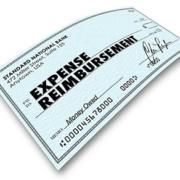Do you have to return a donation when a donor requests it?
If a donor has never asked your not-for-profit to return a gift, it may only be a matter of time. Although uncommon, donors can change their minds. They may come to believe your organization is misusing or wasting donated funds or decide it’s no longer fulfilling its charitable mission. Although you’re probably inclined to cooperate with requests, doing so can be difficult if you’ve already spent the money or if other factors are in play. Let’s look at the problem — and a potential solution.
What the law says
In general, federal law doesn’t require nonprofits to return donations. Individual states have enacted various laws, but these generally are vague about returning contributions. They usually assume that a gift is no longer the property of a donor once a charity accepts it. And because nonprofits are expected to act in the public interest, state regulators may rule that returning a donation harms the public good.
However, to avoid potential lawsuits, some situations require you to return a donation. One such situation is the violation of a donation agreement. If, for example, a donor stipulates that money must go directly to hurricane relief and the funds are instead spent on mobile devices for staffers, the charity is legally obligated to return the donation. Another situation where donations should be returned is when a donor pays for a ticket to a fundraising or other event and the event is cancelled. At the very least, nonprofits should offer a refund for the canceled event, but can ask supporters to donate the amount.
As a gesture of goodwill, it’s usually best to return small donations when asked. Larger gifts may be harder to return. In such circumstances, talk to your attorney and financial advisor — and possibly your state’s nonprofit agency.
Heading off unwanted return requests
No nonprofit wants to return donated funds. Fortunately, you can head off unwanted return requests by adopting a written donation refund policy. State that most donations aren’t eligible for return and explicitly describe the circumstances under which a donation is eligible for return.
Also document large gifts using a standard agreement form that includes your return policy and consider including a “gift-over clause.” This permits a donor to request that a gift be transferred to another organization if the donor believes it has been misused. Finally, observe best fundraising practices. By adhering to the highest ethical standards, you may be able to avoid misunderstandings and conflicts that could result in refund requests.
Get to the bottom of it
Supporters can request the return of donations for many reasons. Try to get to the bottom of each case so you can prevent other donors from following suit. For instance, supporters may object to a recent decision or trend — or simply dislike how something was worded in your newsletter. In these circumstances, you may be able to smooth ruffled feathers and keep the donation. Just be certain you respond quickly to requests and enlist the help of advisors when there’s a threat of legal or financial repercussions.
© 2023












